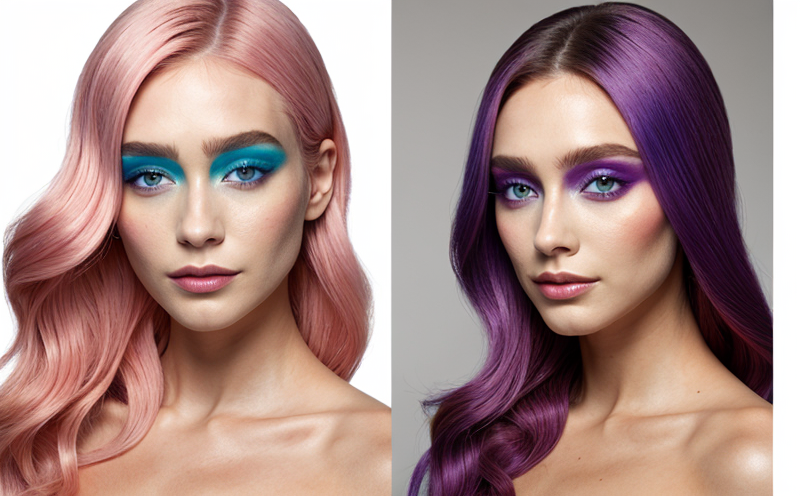Skin Irritation Testing in Lip Color Products
Skin irritation testing is a critical component of quality assurance and safety assessment in cosmetic manufacturing. For lip color products, this test ensures that the ingredients are safe for direct application to the lips without causing adverse effects such as redness, swelling, or itching. This service is essential not only for compliance with regulatory requirements but also for protecting brand reputation and consumer trust.
The testing process involves exposing a portion of human skin to the lip color product for a specified period under controlled conditions. After the exposure time, the skin is evaluated for signs of irritation such as erythema (redness), edema (swelling), or other visible changes indicative of an adverse reaction. This test can be conducted on intact skin using in vitro models like reconstructed human epidermis (RHE) or on excised human skin.
The primary focus is on determining whether the lip color product causes irritation to the skin at concentrations and under conditions that would reasonably be expected during use. The results of these tests are used by manufacturers to make informed decisions about ingredient selection, formulation adjustments, and labeling claims.
Compliance with regulatory standards such as ISO 10993-10:2009 is crucial for ensuring that the testing methodologies meet global quality benchmarks. These standards provide guidelines on how to perform skin irritation tests effectively and interpret the results accurately. By adhering to these standards, manufacturers can ensure their products are safe and compliant with international regulations.
The importance of this service extends beyond legal compliance; it also plays a vital role in enhancing brand reputation and consumer confidence. Consumers increasingly demand transparency regarding product safety, and companies that invest in rigorous testing demonstrate their commitment to delivering high-quality, safe products.
Our laboratory employs experienced scientists and utilizes state-of-the-art equipment to conduct these tests with precision and accuracy. We understand the nuances of lip color formulations and can provide detailed insights into potential irritants and how they might be mitigated through formulation changes or ingredient substitutions.
In addition, our team works closely with clients throughout the testing process to ensure that all requirements are met and to facilitate clear communication about results and recommendations for improvement. This collaborative approach ensures that our clients receive comprehensive support tailored to their specific needs and objectives.
Applied Standards
The following international standards govern skin irritation tests in cosmetics:
- ISO 10993-11:2015 - Non-irritation testing using reconstructed human epidermis (RHE) test systems
- EN 830:2007 - Skin irritancy testing methods for cosmetic products
- ASTM F1677-09(2014) - Standard test method for in vitro irritation potential of cosmetics using human skin equivalents
- IEC TR 62768-5:2013 - Skin irritancy testing methods for personal care products
These standards provide the framework for conducting accurate and reliable tests, ensuring that the results are consistent and reproducible across different laboratories.
Scope and Methodology
| Parameter | Description |
|---|---|
| Test Specimen | Lip color product in question, applied to a reconstructed human epidermis (RHE) or excised human skin. |
| Application Method | Dissolving the lip color into an appropriate solvent and applying it according to standard protocols. |
| Exposure Time | Generally 4 hours for RHE models, with follow-up observations at subsequent intervals. |
| Evaluation Criteria | Assessment of erythema, edema, and other visible signs of irritation. |
| Data Collection | Documentation of test conditions, specimen characteristics, and observed responses. |
The testing process is meticulously planned to ensure that all variables are controlled and that the results are accurate and reliable. Our laboratory adheres strictly to these protocols to deliver consistent and reproducible outcomes.
Customer Impact and Satisfaction
Conducting skin irritation tests on lip color products is not only a regulatory requirement but also an essential step in ensuring product safety and quality. For our customers, this service offers several benefits:
- Regulatory Compliance: Ensures that the product meets international standards and regulations.
- Risk Management: Identifies potential risks early in the development process, allowing for timely adjustments to formulations or ingredients.
- Brand Reputation: Demonstrates a commitment to quality and safety, enhancing brand reputation and consumer trust.
- Customer Confidence: Provides clear evidence that the product is safe for use on sensitive skin.
We strive to exceed customer expectations by offering personalized support and detailed reporting tailored to each client's specific needs. Our team works closely with customers throughout the testing process, ensuring a seamless experience from start to finish.





